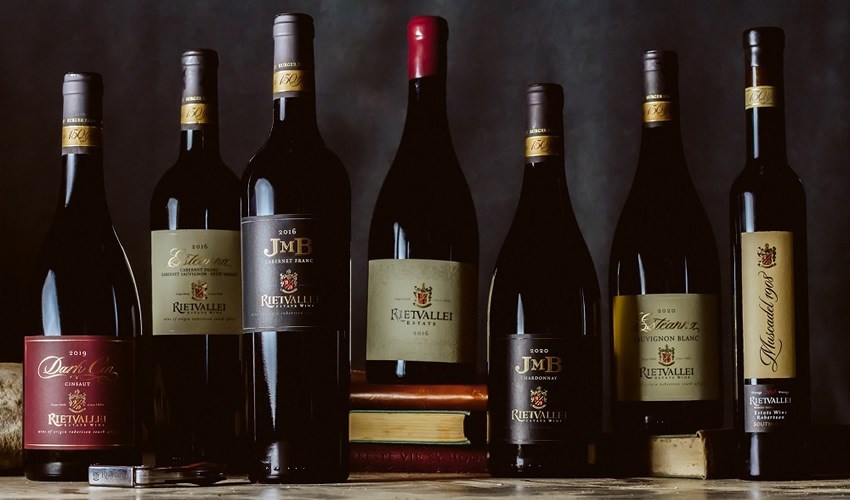With the notion of heritage very much on people’s lips in South Africa during the month of September, with Heritage Day officially celebrated on the 24th, the commercial angle is often simply lip service that takes priority over the deeper significance and meaning of rich legacies and culture.
However, where you can literally walk the heritage path instead of just going the talk way, is Rietvallei Wine Estate, just off the R60, only 160 kilometres from the Mother City. Here tangible and tastable treasures are truly alive and honoured, so you can actually step outside the characterful tasting room in the Manor House, built in 1940, and find yourself a stone’s throw away from one of the country’s oldest and most historical vineyards, a bush vine Red Muscadel (Muscat de Frontignan) vineyard planted in 1908.
Today, surrounded by 119 hectares of newer, thriving vineyards – of sought-after and important cultivars, mainly Sauvignon Blanc, Chardonnay, Cabernet Sauvignon and Shiraz – this 114-year-old Red Muscadel still represents a long-standing flag-bearer that occupies pride of place in the exquisite Rietvallei Heritage Collection range.
The following seven selected wines that make up the Heritage Collection are made in limited quantities, honouring the Rietvallei heritage of timeless family tradition:
- 1908 Muscadel – produced exclusively from bush vines planted in 1908
- Rietvallei Estate 2016 – a unique blend of all seven red varieties planted on the Estate
- JMB Cabernet Franc
- Estéanna Cabernet Sauvignon, Cabernet Franc, Petit Verdot
- Dark Cin (Cinsaut)
- JMB Chardonnay 2020
- Estéanna Sauvignon Blanc

These characterful creations have in recent years not only yielded a rich harvest of top competition accolades, but also proved that Rietvallei is at the forefront of expressing unique terroir traits in the diverse Cape winelands, today with owner-winemaker Kobus Burger at the helm.
All along, the role of Red Muscadel in the estate’s evolvement remains respected and the cultivar is also featured as the Rietvallei Red Muscadel 2018 (500 ml) in the second-tier Classic Collection range – started by Kobus’s late father, Johnny Burger in1976.
At the time, he released the Rietvallei Estate Red Muscadel, which was followed by a barrel-fermented Chardonnay in 1987. Then, only 15 years later, in 2002, the range was expanded with the addition of a Cabernet Sauvignon and a Sauvignon Blanc. The Shiraz and Chenin Blanc followed soon after.
In the spirit of the farm’s treasured culture over its 158 year’s existence, the family theme is reflected in some way or other in each of the 24wines of the current estate portfolio. These include the Burger Family Vineyards and John B ranges – John B obviously honouring JohnnyBurger and so also the JMB brand which refers to his initials, for Johannes Marthinus Burger.
Meanwhile the Estéanna wines’ name is derived from the teenage daughters of Kobus and Elizabeth, Esté and Annie. The younger twin sons are sure to feature in a wine brand to come and further forge the big Burger values seven generations ahead.
The farm was originally bought in 1864 by Alewyn Burger for his son, Jacobus (Koos). The latter was a pioneering wine farmer, who was 70 years old when he planted that special Muscadelvineyard. This, on what counts among South Africa’s oldest family-owned wine estates and was one of the first wine farms established in the picturesque Robertson Wine Valley.
In 2014 Rietvallei reached a major milestone by becoming one of only a handful of South African wine estates to celebrate 150 years of ownership under one family. This heritage of a pioneering Robertson-based wine culture under the guidance of the Burger family chain has contributed to Rietvallei’s track-record of excellence in viticulture and winemaking.
Intimate knowledge of the soils and an understanding of the interaction between nature and vine, along with visionary winemaking practices, lie at the heart of the estate’s status for premier winemaking. So also at its liquid embodiment of heritage today …